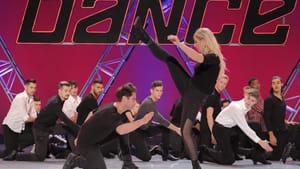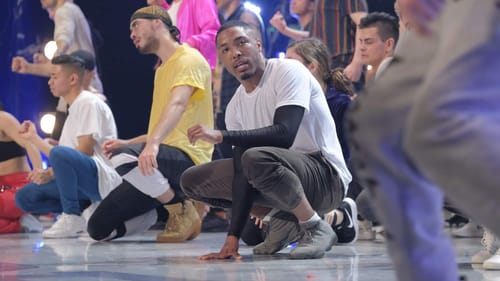Stay in the Loop
BSR publishes on a weekly schedule, with an email newsletter every Wednesday and Thursday morning. There’s no paywall, and subscribing is always free.
TV and the future of dance
Finding the real prize of ‘So You Think You Can Dance’

In 2009, a 15-year-old Sterling Baca performed at the Dizzy Feet Foundation Gala as one of the first recipients of the foundation’s scholarships for young dancers. Dizzy Feet, now the American Dance Movement, is the brainchild of So You Think You Can Dance’s (SYTYCD) executive producer and judge Nigel Lythgoe and choreographer and former judge Adam Shankman.
Baca is grateful to these dance-industry leaders. “I am proof that they can help turn dreams into a career. I would not be a principal dancer at the Pennsylvania Ballet today without their crucial financial support,” he says.
The real prize
Lythgoe, a dancer and choreographer himself, created SYTYCD, a summer TV phenomenon now in its 16th season, to create dance careers. Each year begins with mass auditions and elimination rounds. As viewers, we watch the nuts and bolts of cattle-call auditions and learning choreography, making the cut or going home before the competition even begins. Can these eager dancers survive weeks of gruelingly intensive training to hone new skills, win the hearts of America, and claim the real prize at the end of the contest—a career in the business? Will we agree with the results or bitterly complain on the Internet each week about those jerks who sent our favorites home?
Is the concept cheesy? You bet! Have I watched every season since the first and loved them all? Yes again! It’s chewy television for a dance lover.
SYTYCD has been upfront about its goal since the beginning: take dancers with skills and potential but little or no professional experience, cross-train them in a variety of dance forms, and turn them out ready for Broadway, film, or television. One week, contemporary dancers learn hip-hop and tap dancers learn Bollywood; hip-hop dancers learn jazz and ballet dancers learn Broadway. The next week, the styles are shuffled again, and the contestants must show passable proficiency in all of them. We watch them work with choreographers, learning routines, and we listen to the judges telling them to point their feet or complimenting them on their crumping. We're learning something about dance and hoping the newbies will make it.
But the show isn’t really about looking for America’s best dancer—the judges are looking for performers who can catch the audience’s imagination. In season 4, for example, hip-hop dancer Stephen “tWitch” Boss performed “Mercy,” a powerful contemporary piece, with partner Katee Shean. tWitch ended the season as runner-up and returned in season 5 for a repeat performance of “Mercy” and then as an all-star to partner contestants in his discipline, and as a judge. Since 2014, he’s been the DJ on the Ellen show.
Choreographers in the spotlight
The contest part of the show is for dancers, but SYTYCD is also a showcase for new talent in choreography. “Mercy” choreographer Mia Michaels got an Emmy nomination for the piece. Mandy Moore (the choreographer, not the pop singer of the same name) broke out with the film LaLa Land, but she has been a part of SYTYCD since its first season and won her first Emmy for the show in 2018. Sonya Tayeh blew my mind with “The Garden” in season 4. I felt like I’d been propelled into a whole new language—dance that refused to be pretty but was utterly compelling. She was new too, and has gone on to choreograph for the Martha Graham Dance Company and for Moulin Rouge on Broadway.

Travis Wall first appeared as a contestant in season 2. Like tWitch, he came in second, but he’s become one of the show’s mainstay choreographers and has created works for his own and other companies, including the Cincinnati Ballet. (He beat out Tayeh for the Emmy in 2015.)
A good trend
SYTYCD has its flaws. Pieces may push at the dancers’ comfort zones, but not for long. Contestants must demonstrate their technique and their artistic commitment in less than two minutes on the TV stage, so choreographers pack their creations with lots of tricks and overwrought emotions to make a big impression fast. It is impossible to tell whether the dancer, or the choreographer, can sustain a concert or Broadway show or put in the long hours to create a movie.
Because choreographers are trying to make the dancers look good in disciplines they don’t necessarily know, they blend styles to make the transition easier. “Mercy” combines tWitch’s hip-hop moves with his partner’s contemporary style to show both dancers to advantage. Some people find this a regrettable development, but when it is done well it brings new life to the disciplines.
For all its flaws, we’ve had more than a generation of dancers and viewers who grew up watching SYTYCD and learning how much hard work goes into a career in dance. As a dancer who has benefited indirectly from the show, Baca hopes the trend continues, crediting Lythgoe’s foundation and the show with playing “a pivotal role in bringing dance and ballet into a more popular spotlight.”
If live dance is going to survive, it needs enthusiastic, knowledgeable, and young audiences. Lucky for us, SYTYCD is in the business of creating those, too.
What, When, Where
Watch So You Think You Can Dance Mondays at 9pm on Fox.
Sign up for our newsletter
All of the week's new articles, all in one place. Sign up for the free weekly BSR newsletters, and don't miss a conversation.

 Camille Bacon-Smith
Camille Bacon-Smith